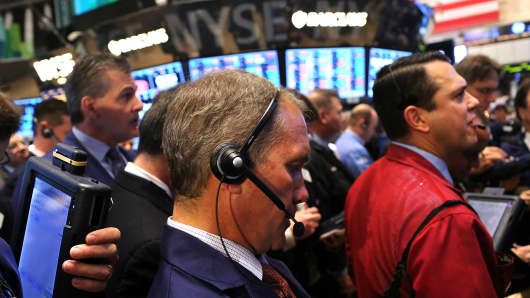Part of the reason the market rally has been so durable is that many investors have been slow to return to stocks, allowing for a gradual melt-up that has prevented things from overheating.
One measure of sentiment, though, is indicating that the bearishness may be running its course.
Short interest as a percentage of total available shares reached a 12-month low of 3.6 percent as a profitable March ended, according to Bespoke Investment Group.
The finding sends two potentially important messages: that investors are finally buying into the rally (a contrarian signal); and that a good portion of the recent move probably came from a short-squeeze in which those betting against the market had to cover their positions.
(Read More: Cramer: This Stock Is in the 'Squeeze of a Lifetime')
Neither provides a certain sign that the seemingly unstoppable rally is coming to a close anytime in the immediate future. But they do give still more fodder to those who wonder when the market will take a breather and allow a better entry point for those on the sidelines.
"The shorts are definitely covering on this recent rally," said Ryan Detrick, senior technical strategist at Schaeffer's Investment Research. "That would be a sign that some of the big potential buying pressure is out of the way. But we're not ready to throw in the towel yet."
The rally has tested the courage of even the most stubborn bear, shrugging off bad news with aplomb and rocketing higher, despite persistent signs of a weakening economy.
(Read More: What to Do in Market Where No News Is Bad News)
In fact, many traders chose to focus Thursday on another strongly contrarian sign, though this time favoring the bulls: a huge surge in pessimism from the closely watched American Association of Individual Investors.





